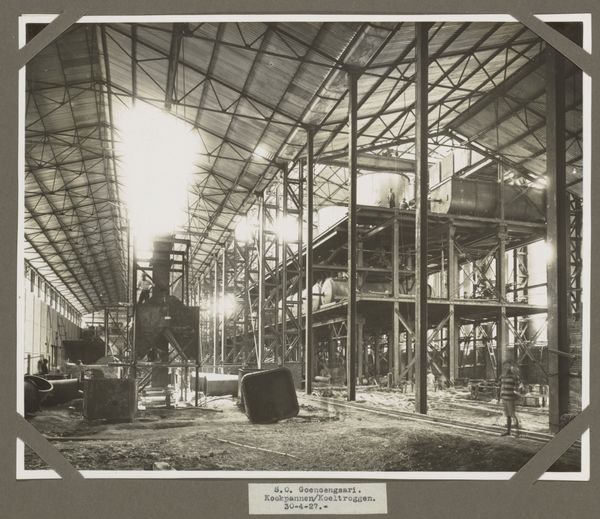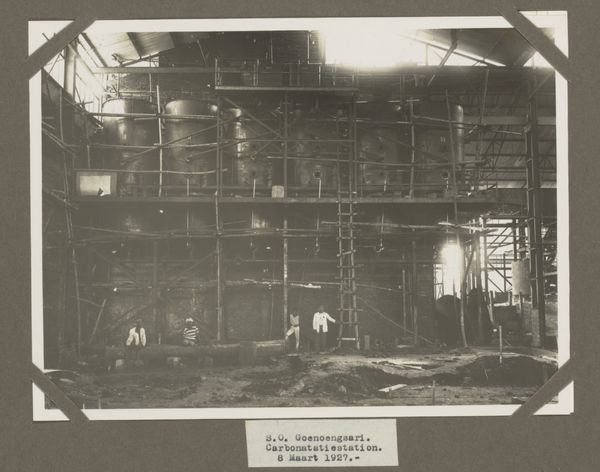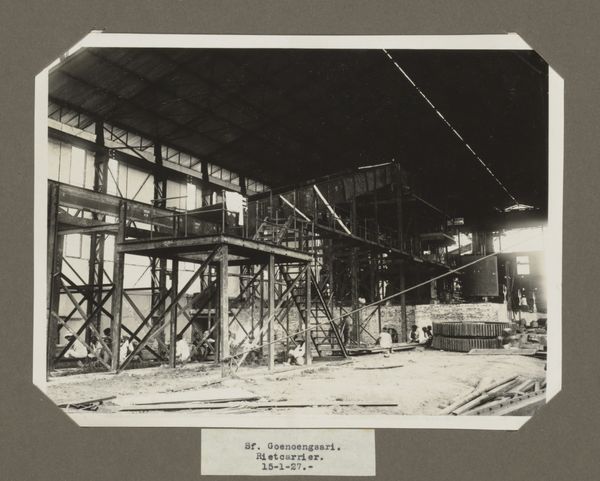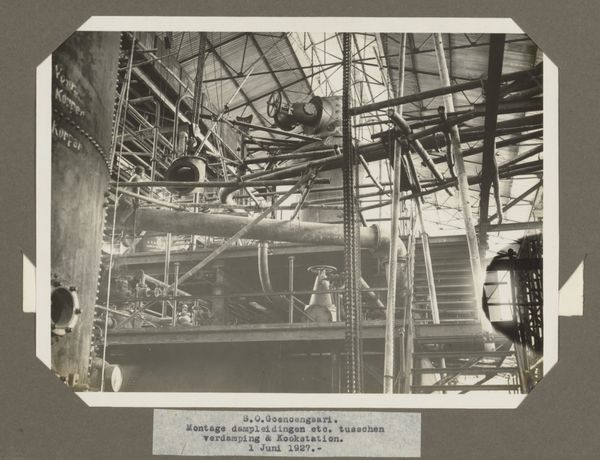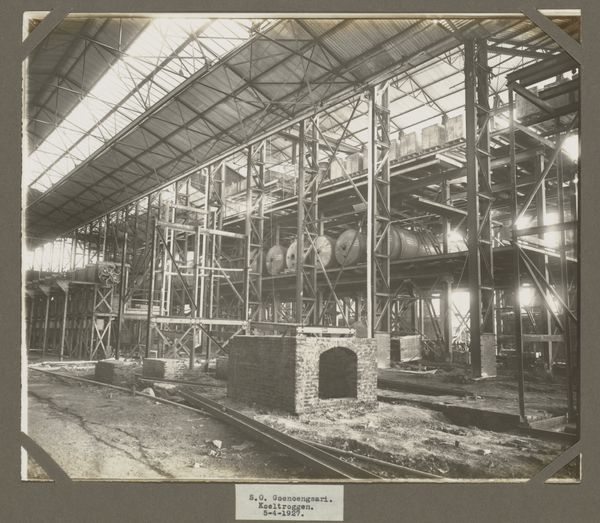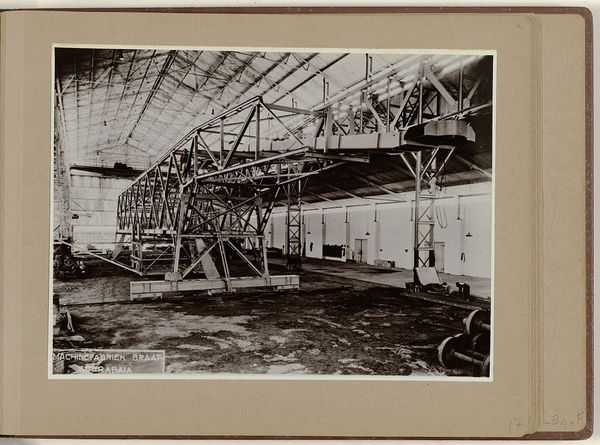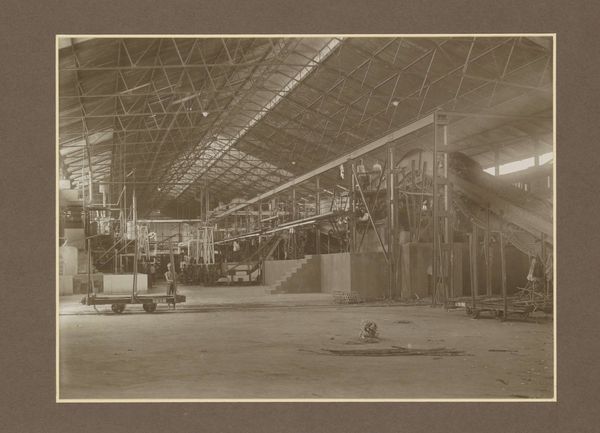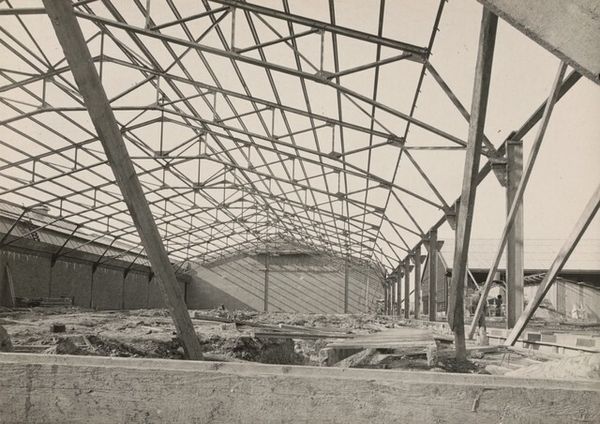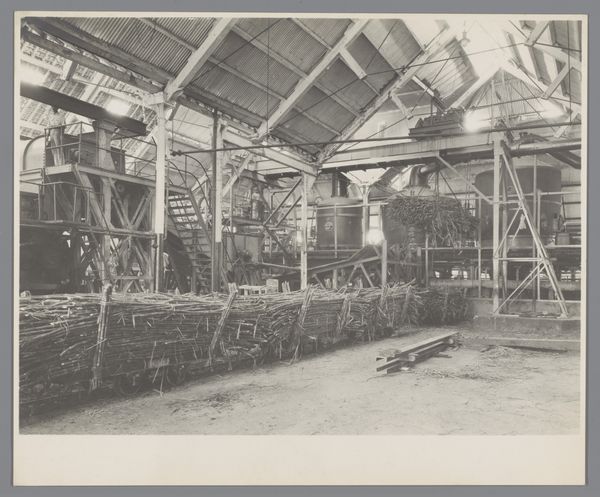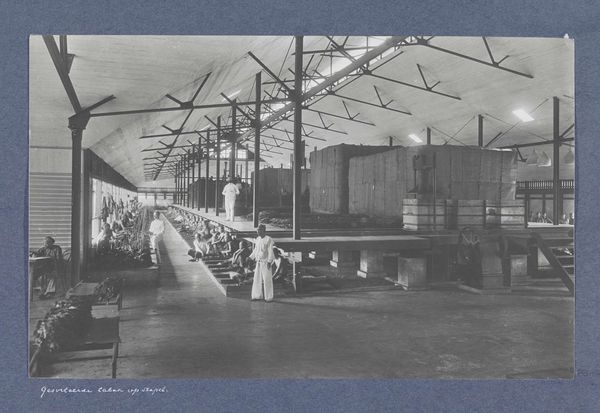
metal, photography, architecture
#
aged paper
#
metal
#
sculpture
#
landscape
#
photography
#
geometric
#
architecture
#
realism
Dimensions: height 176 mm, width 240 mm
Copyright: Rijks Museum: Open Domain
Editor: Here we have an intriguing gelatin silver print entitled "Rietlosinrichting in bedrijf", taken sometime between 1917 and 1938, its author remains anonymous. The stark geometry of the factory against the bundled reeds creates a strange harmony. What stands out to you in this composition? Curator: This image presents an industrial landscape rendered with a distinct sense of order. The metal architecture speaks to human innovation, but the raw material—reeds—points to a connection with nature. It’s a compelling interplay, don’t you think? Do you perceive any inherent conflict or symbiosis within this relationship? Editor: I see a contrast more than a conflict. The reeds seem almost imprisoned by the geometry of the factory, awaiting some unknown process. But then there's also a sense that the factory only exists to serve this natural product. Curator: Precisely! The bundled reeds, hanging almost suspended, act as a potent symbol. Reeds often symbolize flexibility and resilience in the face of adversity. Here, they're within this massive industrial space, perhaps a metaphor for the tension between the individual and the forces of industrialization. Do you get any sense of labor or human presence in this landscape? Editor: Not directly. The human element feels implied rather than shown. The absence of people makes the industrial presence even more powerful, perhaps a reflection on that era's fascination with mechanization. Curator: Indeed, and consider this: these images, devoid of the human figure, began to subtly question what the machine was actually meant to serve. Perhaps, we're looking at a subconscious questioning of industrial progress itself, captured through seemingly simple forms. Editor: That’s fascinating! I hadn't considered the absence of people as a deliberate commentary. This perspective reframes my whole understanding of the image. Curator: The symbols of progress always hold a cultural mirror up to their societies, don’t they? Even the things we think are utilitarian are part of our grand narrative as humans.
Comments
No comments
Be the first to comment and join the conversation on the ultimate creative platform.
